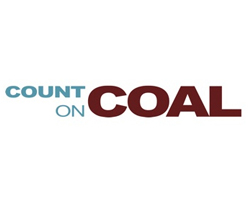January 3, 2024 - As energy transition policy enters a pivotal year, the challenges of maintaining a reliable and affordable supply of electricity are coming into sharper focus. The era of lab modelling is coming to an end as on-the-ground, real-life curveballs have proven how difficult and unpredictable a transition from baseload – or “always on” – power to intermittent, weather dependent and storage constrained generation is going to be.
Beyond concerns about how quickly we can permit and build new energy infrastructure, or if we’re adequately grappling with the projected surge in power demand from electrification and reindustrialization, the shaky performance of the existing natural gas system and renewables is cause for deep concern. Mounting evidence suggests fuel-secure baseload power remains essential to the grid’s durability. Whether or not the Biden administration is willing – or capable – of accepting this reality is the critical question.
The Wind Disappeared
Consider June 6 of last year. Across the 14-state Southwest Power Pool (SPP), which stretches up and down the windiest parts of the country – from New Mexico and Texas all the way up through North Dakota and Montana – wind energy production disappeared. The SPP grid operators were left in disbelief.
Lanny Nickell, executive vice president and chief operating officer of SPP, described what happened: “At 10 o’clock in the morning, out of the 32,000 megawatts of nameplate wind capacity, only 110 megawatts of energy were actually produced. That’s less than 0.4% (of capacity).” He added, “what’s remarkable about that number is that you would expect across a broad geographic footprint covering all or parts of 14 states that you would see more wind than what we saw.”
According to modelers and renewable advocates this kind of widespread collapse in renewable generation simply isn’t supposed to happen. Cloudy or windless conditions in a few states are supposed to be offset by sun or wind in others. Provided a large enough area with adequate transmission ties, valleys in generation in one region should always be offset by peaks in other regions. But rapidly accumulating evidence is debunking that claim. From heat waves to polar vortexes that blanket half the country to windless days, or weeks, the unpredictability of the weather is getting the best of computer models and attempts to de-risk the inherently risky.
A Greater Margin for Error, Not Less
If anything, we’re learning that an energy system built on the vagaries of the weather requires a far greater margin for error—far larger dispatchable reserves, not less. Yet, energy policy – namely the U.S. Environmental Protection Agency’s (EPA’s) regulatory onslaught – is delivering the opposite. We’re accelerating the loss of dispatchable power – namely the fuel-secure coal fleet – when every reliability indicator is telling us to slow down and reinforce the reliability backstop we so clearly need.
The mounting challenges of renewable integration in the U.S. – from a deepening solar duck curve in California to windless days in the Midwest – are hardly a uniquely American problem. The Germans have their own word for uncooperative weather that can crush renewable output: Dunkelflaute, or the dark doldrums. These periods of windless, cloudy days are pushing grids across the world to the very edge of catastrophe. In November of 2022, the wind nearly stopped across Europe for an entire week. In Germany, keeping the lights on meant firing up the coal fleet to meet 40% of the nation’s power. In Britain, the collapse of wind generation saw the grid go from 16.4 gigawatts of wind power to just .4 in 40 hours.
This is the paradox of the energy transition: a great industrialization of farmland and rural landscapes with solar panels and wind turbines is now leaving the world’s most industrially advanced nations in a pre-industrial predicament. We’re alarmingly beholden to the whims of the weather and the stakes couldn’t be larger.
When we need nearly perfect policy to stick the landing of the transition, we’re getting incoherent and dangerous mandates that put reliability last when it should be first. Time is running out to grapple with reality and deliver the energy policy course correction the nation’s grid reliability so desperately needs. |



















































